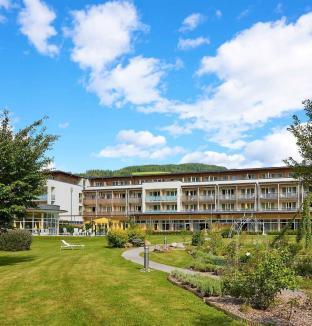Green building, serving the planet, our patients, our residents and our employees
The Green Building Strategy involves the design, construction and operation of buildings to improve their environmental impact and sustainability. It also focuses on the comfort and quality of life of its occupants. Introducing its application at emeis!
What is green building strategy?
The Green Building Strategy applies to new-build projects as well as to buildings in operation. It is based on four key principles, which meet and exceed current environmental standards and regulations:
- Promoting energy efficiency and reducing greenhouse gas emissions to help combat climate change
- Placing biodiversity and biophilia at the heart of our facilities
- Reduce pressure on non-renewable natural resources and develop the circular economy
- Share the Green Building approach with all stakeholders, involve them in its implementation and certify our buildings

Did you know? In April 2024, emeis joined the OID (Observatoire de l'Immobilier Durable), which aims to accelerate the ecological transition of the real estate sector in France and internationally. emeis is the first player in the medico-social and healthcare sector to join the association!
Energy efficiency and sobriety
The Group is committed to reducing the energy consumption of its buildings by 30% by 2030, and their CO2 emissions by 31%, compared with 2019. The main actions deployed in new buildings and renovations to achieve these targets are: insulating building envelopes, installing energy-efficient equipment, and incorporating renewable energy sources. For buildings in operation, an energy audit campaign was launched at the end of 2021. By early 2023, all 361 sites in France had been audited and the associated work plans launched. At the same time, building users were made aware of the need to make efficient use of energy and resources, as this phase of a building's life is the most sensitive in terms of energy management.
Geo-energy at Plancoët and Crosne
To supply its new buildings in Crosne (EHPAD in the Ile-de-France region) and Plancoët (a medical and rehabilitation clinic in the Côtes d'Armor region), emeis has opted for renewable energies with geoenergy. The use of geoenergy, which consists in recovering heat from the subsoil to produce heat and cold, will enable these two buildings to reduce their energy consumption and CO2 emissions compared with conventional heating and cooling solutions. In Plancoët, in particular, a reduction of around 30% in total energy consumption and 91% in carbon emissions linked to heating and cooling is envisaged. For the greater comfort of patients and residents!

Circular economy
All future construction projects will benefit from a rainwater recovery system for outdoor cleaning and watering, and 70% of site waste will be recycled or reused. All works will comply with a low-nuisance worksite charter to reduce the environmental impact of the construction phase.
The Green Building Strategy also gives priority to the health and well-being of building occupants, in areas such as indoor air quality, access to natural light and optimized thermal comfort.
Building certification
emeis is committed to obtaining BREEAM Very good or equivalent environmental certification (LEED Gold, HQE Excellent, DGNB, GPR) for all its new construction projects. These certifications bring the Group recognition from stakeholders in France and abroad. They also enable us to take a cross-functional, multi-thematic approach to sustainable real estate: energy, materials, circular economy, well-being and health, biodiversity, pollution, sustainable mobility and climate resilience.
A charter for biodiversity and biophilia
The Group's role as a major player in healthcare and support for the most vulnerable implies social, societal and environmental responsibility. The Group has therefore chosen to organize its medical and care activities, its real estate projects and its support functions with a constant eye on the environment, the living world and biodiversity, three essential dimensions that must be reconciled and respected in a sustainable development approach. The Group's commitments in this area are set out in a Biodiversity and Biophilicity Charter and documented in an internal label, “BiophilGood”, the result of a collaborative approach involving ecologists and the medical profession.

